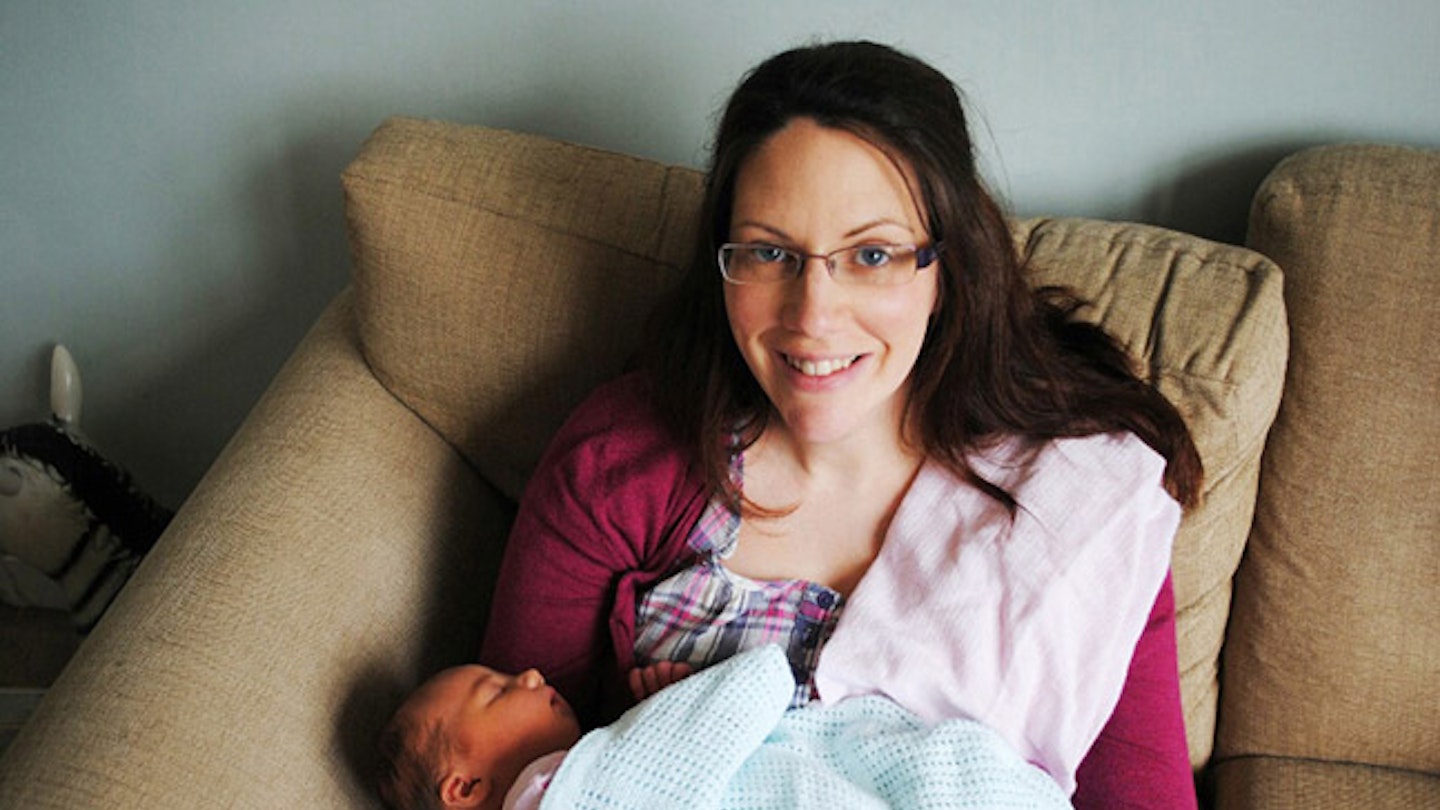Wanting better aftercare, this M&B reader decided to use a midwife-led unit.
Heather Dunkley, 34, a primary teacher, lives in Leicester with husband Ben, 34, and daughters Grace, two, and Hannah, seven months
I was naïve after I had my first baby
Having been discharged after just five hours, I struggled to breastfeed and felt isolated at home. On day three I started feeling fluey, which the midwife put down to a bug. On day 10 I was rushed to A&E and diagnosed with an infection on the lining on my womb.
“The mums raved about their comfortable stays in the days after birth and the breastfeeding support”
Second time around, I researched where I could get better aftercare
Chatting to mums in my area, I heard about a local midwife-led unit. The mums raved about their comfortable stays in the days after birth and the breastfeeding support. I knew that was the best place for me.
My labour began slowly
I had been feeling ‘tightenings’ in my bump for days. Then, eight days before my due date, I started having contractions every 10 minutes. At 2am the next morning, an intense contraction woke me.
I was desperate to go to the MLU
I paced around and breathed deeply. Ben phoned my mum to look after Grace, and called the midwife. I was advised to stay at home. My waters hadn’t broken but after a couple of painful hours at home, I called to say we were on our way.
“I felt at home and any niggles I had about not having doctors around disappeared”
It was a relief to see my room
At 5.30am we arrived at the midwife-led unit and I immediately felt confident. My room was homely with dim lighting, a big birth pool and a private bathroom. It felt a million miles away from a clinical ward. I felt at home and any niggles I had about not having doctors around disappeared.
The midwives were so reassuring
When I was examined, I was 8cm dilated – which surprised us all. Suddenly my waters broke with a gush, and it all felt very real. But I felt as if I was in safe hands. Waiting for the birthing pool to fill up, I sat on the edge of the bed, breathing in gas and air, which helped to keep me calm. As soon as I climbed into the water, I started to push. I didn’t feel the need for more gas and air.
Pushing took about 15 minutes
I was aware of the midwives’ presence in the room, but they stayed in the background. Ben was the one sitting next to me as I knelt over the side of the pool and pushed with all my strength. I was aware that this was a really special moment.
I felt a burning, stinging sensation and realised that the head was about to come out. In one huge contraction, I felt an enormous pressure and moved my hand down to feel a mop of hair between my legs. I gave one final, almighty push and the body emerged. As I held Hannah against my chest, I felt a rush of love. I was over the moon.
I never felt alone like I had during my previous birth
My birth experience was completely different and so much better.
The three days I spent at the unit after the birth were so important
Nothing was too much trouble for the midwives. I was transferred to a quiet ward, and given lots of help with feeding. Ben came along during visiting hours but for the rest of the time I was with the midwives. By the time I went home, I felt relaxed and confident.
Three things I’d tell my friends
-
Check that your chosen midwife-led unit has a birth pool – most do as standard. Water is an amazing natural painkiller.
-
Moving around and staying upright really helped to progress my labour. A spacious unit will give you all the room you need.
-
Don’t be shy when it comes to accepting help with breastfeeding. Sometimes, it’s only by being physically shown the correct position, that you can get it right. That means hands-on demonstrations!
